Former first lady Nancy Reagan passed away March 6, 2016 at the age of 94. Reagan died at her home in Los Angeles of congestive heart failure, according to her spokeswoman, Joanne Drake of the Ronald Reagan Presidential Library.

Official White House photograph of Nancy Reagan, wife to then-President of the United States Ronald Reagan.
As a person who documents abortion I believe it is important to document the abortion positions of our Nation’s leaders, including Nancy Reagan.
Many people do not know that as Governor Ronald Reagan signed the first abortion law in California.
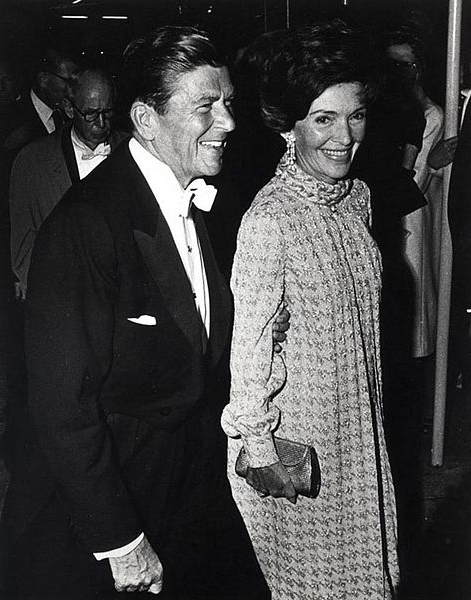
Governor Ronald Reagan and Nancy Reagan at the Governor’s Inaugural Ball in Sacramento, California. Source: Public Domain via Ronald Reagan Presidential Foundation and Library
Authors Paul Kengor & Patricia Clark Doerner recount this history in a 2008 National Review article:
On June 14, 1967, Ronald Reagan signed the Therapeutic Abortion Act, after only six months as California governor. From a total of 518 legal abortions in California in 1967, the number of abortions would soar to an annual average of 100,000 in the remaining years of Reagan’s two terms — more abortions than in any U.S. state prior to the advent of Roe v. Wade. Reagan’s signing of the abortion bill was an ironic beginning for a man often seen as the modern father of the pro-life movement. How did this happen? When the issue surfaced in the first months of his governorship, Reagan was unsure how to react. Surprising as it may seem today, in 1967 abortion was not the great public issue that it is today. Reagan later admitted that abortion had been “a subject I’d never given much thought to.” Moreover, his aides were divided on the question.
In 1967, as one of the nation’s first abortion laws it legalized abortion when the pregnancy threatened the physical or mental health of the mother and also allowed abortion in cases of rape. The law restricted abortion after 20 weeks.
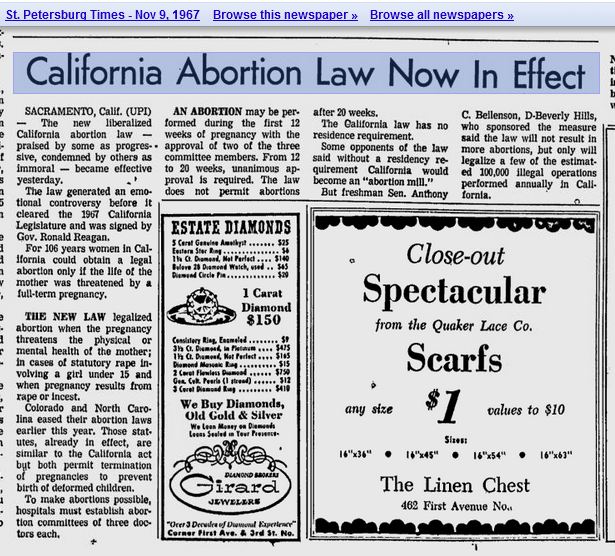
Prior to its legalization, Section 274 of the Penal Code, read: “Every person who provides, supplies, or administers to any woman, or procures any woman to take any medicine, drug, or substance, or uses or employs any instrument or other means whatever, with intent thereby to procure the miscarriage of such woman, unless the same is necessary to preserve her life, is punishable by imprisonment in the State prison not less than two nor more than five years.”
In 1967, the statute was amended and sections 25950 through 25954 (“Therapeutic Abortion Act”) added to the Health and Safety Code. The act extended the lawful grounds for obtaining an abortion. fn. 2 Section 274 is directed towards the abortionist. Under section 275 of the [71 Cal. 2d 960] Penal Code (also amended by the Therapeutic Abortion Act), a woman who solicits or submits to an abortion is punishable by up to five years’ imprisonment; similarly, under section 276, any person who solicits a woman to submit to an abortion is punishable by up to five years’ imprisonment. The law’s evolution is described further here.
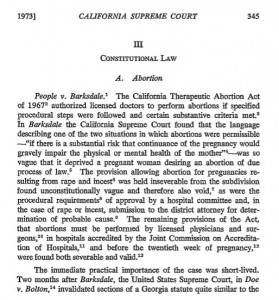
By 1971, a state appeals court ruled that all abortions could be legal in the state of California.
According to a study published in 1971, therapeutic abortions in California increased from 5,030 in 1968 to 15,339 in 1969, and over 60,000 were estimated for 1970. As a result regionally, in 1969 the San Francisco Bay Area had six times as many abortions (115 per 1000 births) as did the Los Angeles Metropolitan Area.
Then by 1971, projections became truth and according to reports, over 62,000 abortions were performed in the state that year prompting Nancy Reagan in 1972, to observe that the California abortion law was being abused.
Nancy Reagan’s stand on abortion showed confusion as early as the 1970’s
In 1972, Governor Ronald Reagan’s wife, Nancy Reagan added this about the law her husband passed, “If we accept the right to take life before birth are we so far from making the decision after birth?”
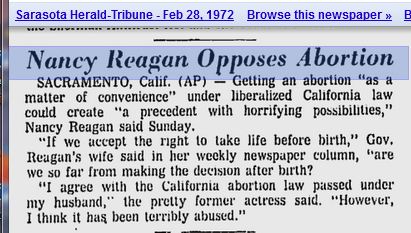
Despite the strong statement, Nancy added that she supported a woman’s right to choose abortion in certain cases:
“I agree with the California abortion law passed by under husband, however, I believe it has been terribly abused.”
The large numbers of abortion brought about by a law that Ronald Reagan signed weighed heavily on him.
Author Edmund Morris said that Ronald Reagan was left with an “undefinable sense of guilt” after watching abortions skyrocket.
“If there is a question as to whether there is life or death, the doubt should be resolved in favor of life,” he wrote.

Reagan biographer Lou Cannon claims this was “the only time as governor or president that Reagan acknowledged a mistake on major legislation.” Reagan’s longtime adviser and Cabinet secretary Bill Clark called the incident “perhaps Reagan’s greatest disappointment in public life.”
Ronald Reagan went on to become the most pro-life president the US has had since the legalization of abortion through the Roe v. Wade decision.
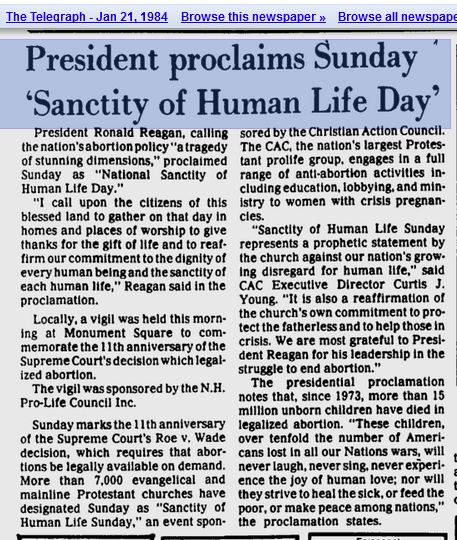

In 1975, Nancy criticized welfare (Government funded abortion):
“Our welfare program making abortions available to under aged girls regardless of their families financial situation and without informing family” amounted to “government at the highest level interfering in family relationships.”
Tragically by 1994, the former first lady Nancy Reagan went on record as supporting abortion along with former first lady Barbara Bush:
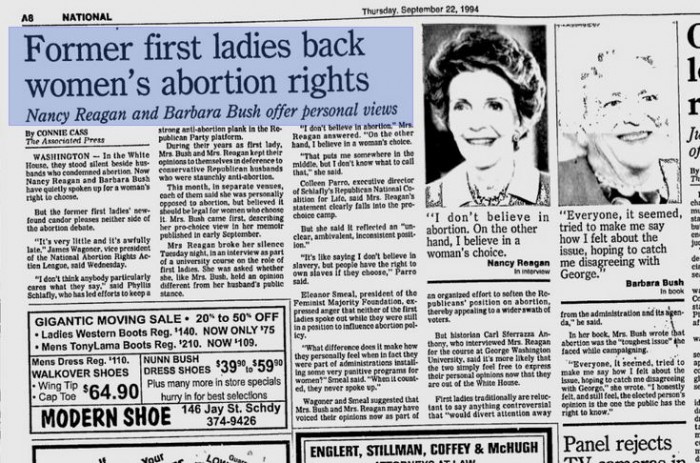
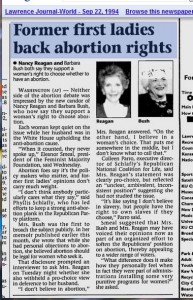
“I don’t believe in abortion,” Nancy Reagan said.
“On the other hand I believe in a woman’s choice. That puts me somewhere in the middle, but I don’t know what to call that,” she added.
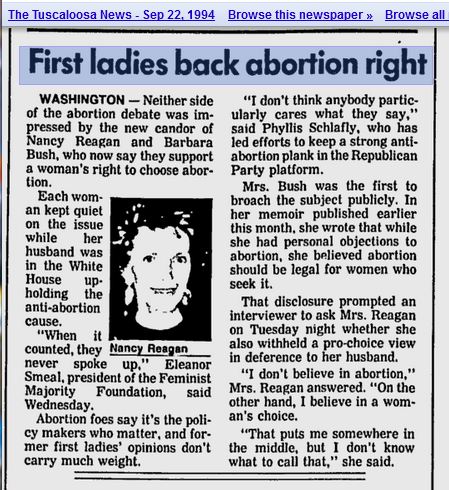
By 2002, Nancy Reagan was pushing embryonic stem cell research something pro-lifers opposed:
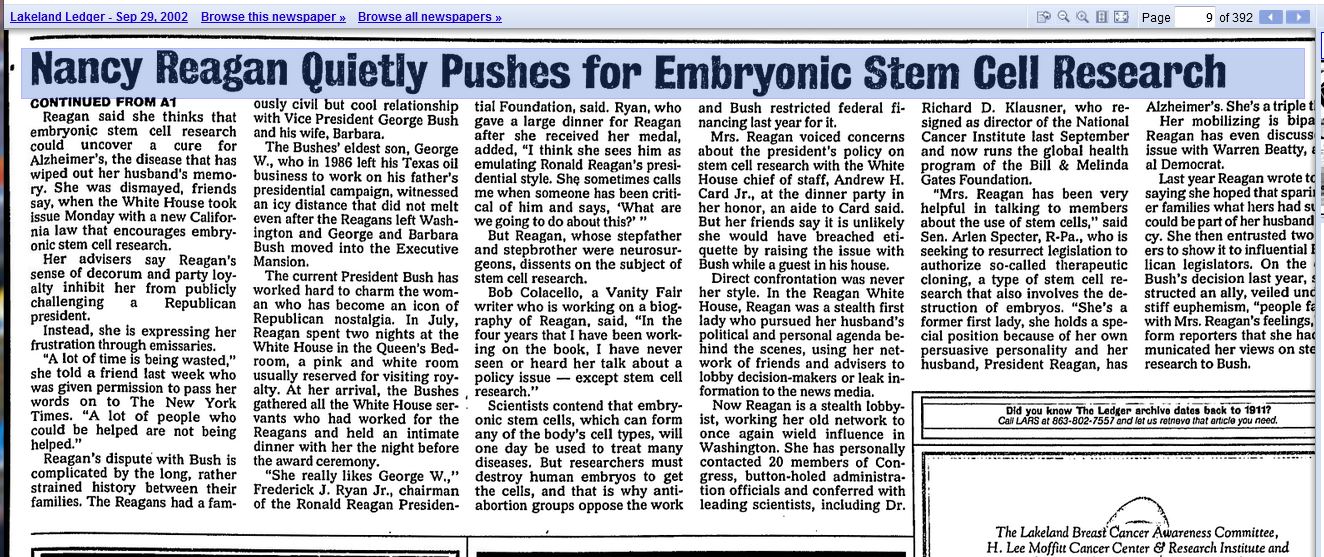
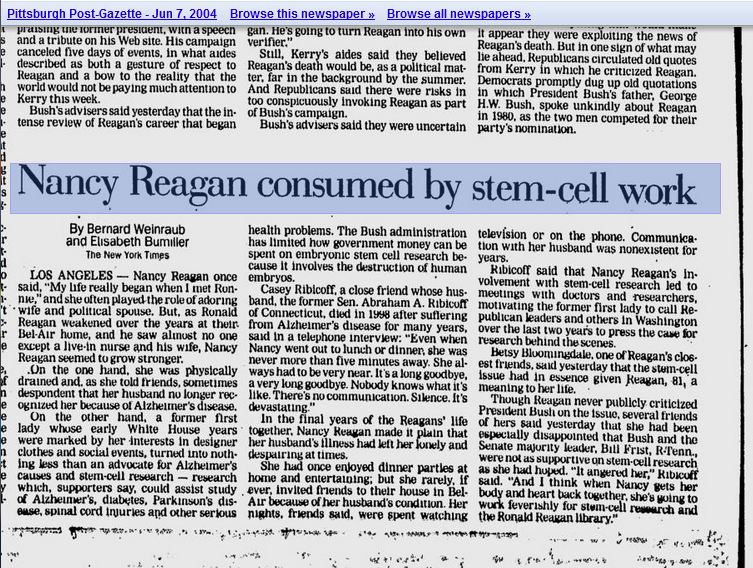
Nancy saw the move as a way to find a cure for Alzheimer’s something President Ronald Reagan suffered from prior to his death.
Nancy Reagan gave an award to her son Ron Reagan-for his fight for embryonic stem cell research:
Nancy Reagan joined President Ronald Reagan when she passed away on March 6, 2016.
OTHER FIRST LADY’S WHO DISAGREED WITH THEIR HUSBAND’S PRO-LIFE STAND:
In an interview with Larry King, Barbara Bush described how her “fetus” was placed in a jar after a miscarriage:
“That’s one issue, I’m not a one issue person,” Barbara Said of her pro-choice views.
Former first lady Laura Bush also came out as in favor of abortion to Larry King,
“I think it’s important that it [abortion] remains legal,” she said.
This post has been republished with permission from the Saynsumnthn Blog where it originally appeared.






